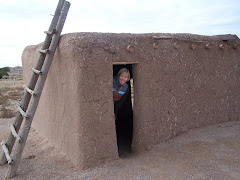Cole, Jeanie (2009).Keep Them Chatting. Learning & Leading. 36, 32-33.
In the latest assigned journal article Jeanie Cole deals with the issue of online student collaboration and discussion. Online resources like chat rooms, discussion boards and wikis are great tools available to teachers, but challenge lies in the fact that students often lose interest in these online discussions. Cole offers specific ideas and types of questions that teachers can use to build maintain student interest in online collaboration.
Cole suggest that, when creating questions, teachers plan clear objectives for the outcome of the discussion, and that teachers post questions that require students to interact and research course content. Cole gives four examples of questions that accomplish this.
First are high-level, open-ended questions. This is a method that I have notice is widely used in college courses. The students are given a question, a rubric, and each member of the group must post a certain number of entries to the online collaboration. In addition, each group member must comment on a certain number of other student’s posts.
The inquiry method gives a question that requires students to do research and use problem-solving skills. Students must brainstorm and come up with a hypothesis online, and decide on how to research their topic in the discussion board. Specific requirements are given, so that students know where and how to report their research, and they are also required to view and comment on their classmate’s research and hypotheses.
When using the discrepant event inquiry method, the first step is for students to view a video, photo, or other unexplained demonstration. They must then answer a question related to what they have just seen. In order to answer this question, students must collaborate and do independent research. The teacher will give necessary information and guidelines to help the students wit their research. Again, in this method, peer feedback is key. Upon completion of their own projects, students evaluate and comment on other group’s work.
When using the personal examples approach, a teacher will give students a question that incorporates aspects of the students’ personalities, then give s an assignment that applies these traits to a research project or discussion topic. In her article, Cole gives the example of asking the students to design their ideal roller coaster. The teacher would give a list of roller coaster characteristics and elements that the students would pick from, based on their own roller coaster preferences. Students would then calculate certain mathematical features of their roller coaster. Based on what elements the students chose, they would then research online and to fine the roller coaster that is closest to their ideal. Finally, group s would evaluate each other’s coasters and research
Illogical comparisons are a method that seeks to compare and contrast two elements that are seemingly very different. Cole uses the example of English students comparing and contrasting Miss Piggy and Guinevere. After comparing and contrasting the two characters, students are to write an Arthurian legend for Miss Piggy, set in modern times. While students may and will use text and online resources to create their legend, they must know the content of their material, research independently, and get creative to complete this assignment.
Question #1:
Peer evaluation seems to be a common theme in Cole’s examples. How might peer evaluation enhance students’ online learning and keep them engaged?
The element of peer evaluation encourages students to expand their knowledge of subject matter, offering them alternative approaches to and viewpoints of assigned questions and projects. Simultaneously, it gives students a sense of ownership of and responsibility for their idea. They might take an assignment more seriously if they know that the entire class will be evaluating it, rather than only the teacher. Especially in middle and high school, the opinions of classmates might carry more weight for a student than a teacher’s opinion, and this might inspire the student to work harder to gain the approval of their peers. In addition, performing peer evaluations gives a student a sense of empowerment. Their words matter in an online collaboration, and their opinion counts. Again, since the entire class can usually view comments/evaluations, students who are performing peer evaluations will be encouraged to leave thoughtful comments that reflect positively on themselves.
Question #2:
How might online peer evaluation enhance the teacher’s evaluation and understanding of students’ work?
Online peer evaluation offers students the chance to evaluate their peer’s work honestly and openly. Students can take their time when looking at another group’s research, and complete evaluations without being rushed. This might be especially helpful to students who are struggling with reading and/or comprehension. They can take their time looking over a group’s research, and form their own opinion of it. This same student might feel rushed if he or she has to fill out a peer evaluation while watching a group presentation, and rush to complete the evaluation by the end of the class period/presentation. This might make the difference between a thoughtful peer review and one with little meaning, and will give the teacher a truer understanding of a student’s grasp of the material. Online evaluation also offers an opportunity for the shy students to express themselves openly. A student who may dislike public speaking may be open to sharing their ideas online, giving the teacher an opportunity to understand that student’s ideas which they might not have, otherwise.
Wednesday, February 18, 2009
Subscribe to:
Post Comments (Atom)



No comments:
Post a Comment